There are 50 companion plants for gardenias in this list that are bound to transform your garden into a brilliant floral sanctuary.
Do you have a gardenia garden at home and struggle to elevate its look? With the right companion plants for gardenias, you can transform a regular home garden into an outstanding floral sanctuary. With the right companion plants, you can integrate everything from ornamental annuals to texture adding evergreen perennials and even edible herbs (to save that grocery buck!).
A tender evergreen shrub, gardenia grows showy fragrant flowers accentuated by shiny and dark green leaf foliage. While gardenias are fussy and require a degree of care, the end product is certainly rewarding and worth the effort.
Due to their degree of care requirements, you also have to be particular when picking the right companion plants. After all, you want companions that would thrive in the same growing conditions without competing for resources or taking center stage.
After careful research and garden testing, here are the 50 popular gardener recommendations for the best companion plants for gardenias.
Table of Contents
Why Pair Gardenias with Companion Plants?
Understanding the deep green foliage of gardenia alongside its soil and light requirements reveals why certain plants are ideal companions, enhancing the health of your gardenia and garden aesthetics.
The number one reason to pair gardenias with companion plants is for their ornamental value. These flowering shrubs grow beautiful showy flowers with dark contrasting leaf foliage and are exquisitely scented. However, this is not all you get from a gardenia companion planting.
Gardenias and their companions boast bidirectional benefits, with either plant benefiting from the other. Companions of gardenias benefit from their beautiful blossoms that help attract countless pollinators. But, gardenias also benefit from the same by planting with pollinator-attracting flowering plants.
Additionally, different plant types come with varying visual appeal to help you curate your garden the way you want. Whether you want to accentuate the floral appeal by pairing gardenia with azaleas or want different textual layers by pairing them with hostas, the sky’s the limit.
Further, gardenias are prone to insect and pest infestations. In particular, they are susceptible to aphids, spider mites, white flies, and mealy bugs or scale insects. So, pairing them with plants that repel these pests can help you maintain a healthier garden.
What Are The Best Companion Plants for Gardenias?
You find a wide variety of the best companion plants for gardenias. These include flowering shrubs, such as azaleas and camellias, blooming annuals like wax begonia and impatiens, herbs, such as sage and basil, and even larger trees, like Japanese maple and crepe myrtle.
However, these are not the only ideal companion plants for gardenias. There is a long list of the best plants to pair with these flowering shrubs. In fact, you can pick the ideal plants for your gardenia garden by simply looking out for the right properties.
I’ve put together the standard properties to look out for when picking the best companion plants for gardenias;
- Gardenias prefer moist, well-drained, and acidic soils (pH of 5.0 to 6.0). Further, while they survive in the tropics, gardenias prefer to remain moist and cannot tolerate the full sun. They also grow best in USDA hardiness zones 9 and 10, although you can find a few hybrid varieties that survive in hardiness zones 8 (cool temperatures). You need to pick companions that grow well in similar conditions.
- Gardenia prefers the morning sunlight and partial shade in the afternoon – ideal companion plants thrive in less sunny areas.
- Ideal companion plants should compete with the root zone of gardenias. So, always leave adequate space during planting to prevent crowding, and choose plants with shallow roots.
- Gardenias are known to have a strong and intoxicating scent – heavily scented plants don’t make the best companionship with these flowering shrubs so they can easily compete, overpower, or mask the scent of gardenias.
- Gardenias boast beautiful blossoms that pair perfectly with other annuals to create the perfect floral garden. However, you have to be careful with your choices to prevent the blossoms of gardenias and other annuals from fighting aesthetically.
- Gardenias are prone to certain diseases, including powdery mildew, root rot, nematodes, and stem cankers. So, you want to plant them with options that don’t further exacerbate these conditions or create the environment for these conditions to thrive.
50 Fantastic Plants to Pair with Gardenias
Selecting gardenia companion plants requires considering similar soil conditions, including well-drained soil and a specific pH level. Ideal companions, such as hydrangea plants, not only share these needs but also contribute to the garden’s overall health by attracting beneficial insects and offering protection against common problems like sooty mold.
Flowering Shrubs
1. Azaleas
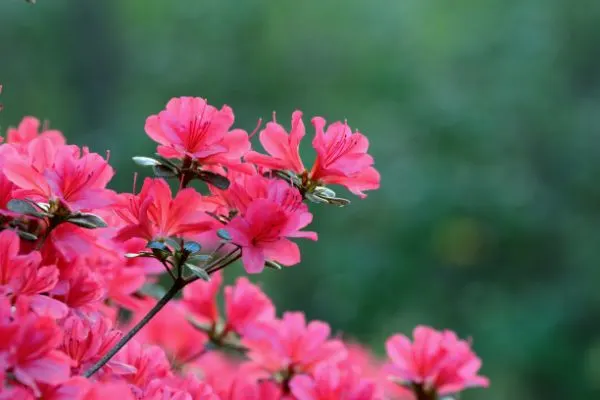
Also known as Rhododendrons, azaleas are more forgiving than gardenias, surviving in hardiness zones 3 to 9 and even, slightly more acidic soils. However, they pair excellently with gardenias. These flowering shrubs grow a reasonable variety of flower shades, including white.
So, pairing them with azaleas creates the dreamy all-white garden look you wish to achieve. Just like gardenias, you want to position azaleas in the part of the garden where they will enjoy the early morning sun and partial shade protection in the afternoon.
2. Camellias
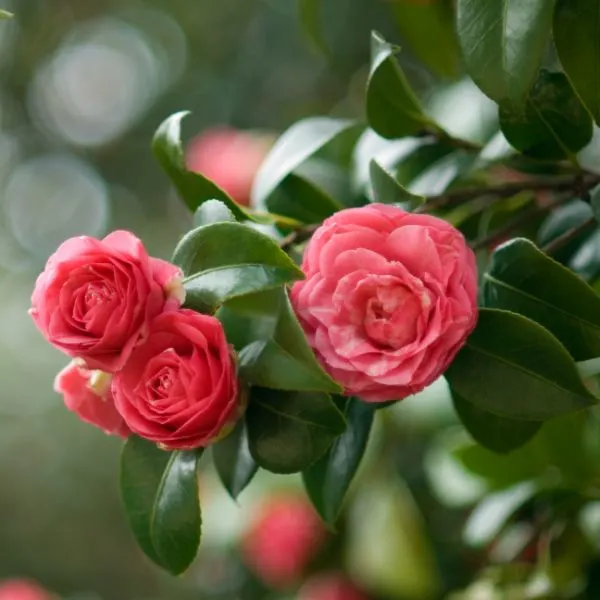
Camellia sasanqua, with its glossy leaves and pink flowers, is another excellent match, thriving under similar light conditions and offering a staggered bloom time to ensure your garden remains vibrant from late spring through early summer.
Camellias pair well with gardenias and add that blooming element to your garden for much longer. While gardenias bloom in summer through fall, the cold weather-tolerant camellias blossoms from late fall through early spring. This ensures that your garden is always adorned with beautiful flowers almost all year round.
While sharing growing needs, gardenias and camellias don’t compete for resources. So, they truly complete one another in their growth. You will even come across commercially available fertilizers for acid-loving plants, marketed to use for azaleas, camellias, and gardenias.
Camellias boast beautiful white blossoms and glossy foliage and pair incredibly well with gardenias. In fact, gardenias help to accentuate their beautiful blossoms. While their white-flowered varieties are popular, you can also find camellias in soft pink, yellow, and red shades.
Tip: You can use the characteristic all-white blossoms of the two plants to achieve that classic cottage look in your garden. You can also add other camellia varieties for that extra light pop of color, like soft pink.
3. Hydrangeas
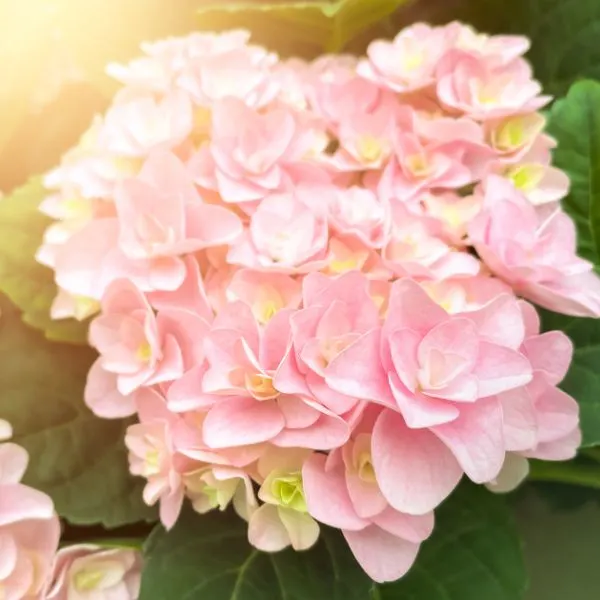
Hydrangeas, with their cloud-like blooms of a variety of colors, make for a great companion plant to gardenias. Planted in early summer, they share a love for well-drained, acidic soil, and their water requirements are compatible, ensuring both can reach full bloom without competing for moisture.
4. Boxwood

Boxwood is what you add to your garden to achieve that exclusive, classy, and elegant look. Pairing these evergreen shrubs with gardenias takes your garden look to a whole new ornamental level. Boxwood is popular for its beautiful dense evergreen foliage and not so much for its much smaller and insignificant blossoms.
They form a round ball that best achieves that elegant look with frequent pruning. These shrubs also form the perfect formal and elegant landscapes, hedges, borders, and even accommodating shrubs around your entryway. Pair them with elegant all-white gardenias to create the perfect garden focal point.
5. Virginia Sweetspire
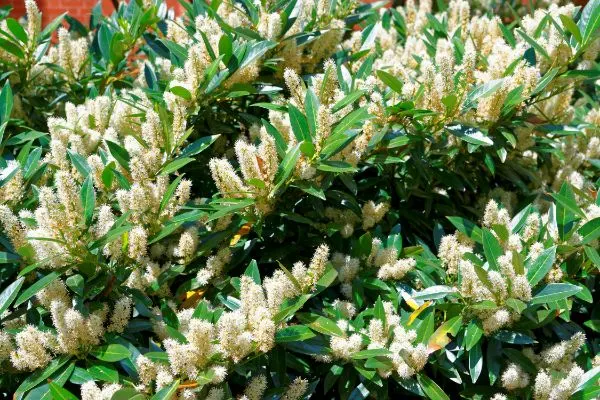
Also known as Itea Sweetspire, Virginia Sweetspire pairs impressively with gardenia to form an attractive landscape. The shrub grows deep green foliage and drooping brush flowers complemented by an intoxicating fragrance. Surprisingly, their fragrance blends pretty well with gardenias without overpowering them.
The blossoms appear during the spring season for a captivating display and extend the garden’s blooming season from spring to summer where the gardenias take over through fall. The showy drooping blossoms on the Virginia Sweetspire also attract pollinators, like butterflies, while the berries serve as food for birds.
6. Summersweet
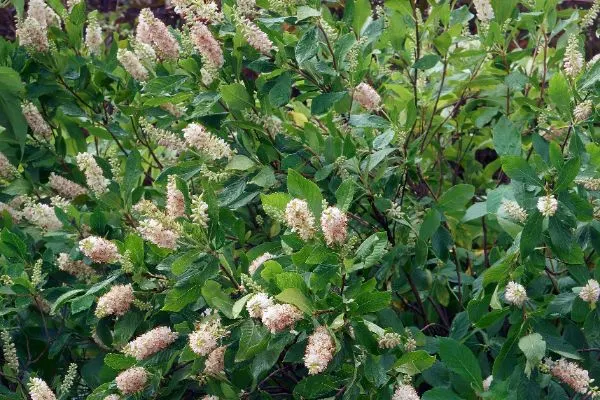
Also known as pepper bush, Summersweet is an ornamental shrub that grows spiky white flowers with a spicy-like scent. Similar to gardenias, the blossoms of this shrub appear during mid to late summer. But, when paired with gardenias, the shrub’s transition into fall creates a beautiful color play.
As the season transitions to fall, the dark green foliage of the shrub turns yellow to orange for an even more striking look. For a better view, combine Summersweet and gardenia in landscape, specimen, or group planting.
Evergreen & Shade Loving Perennials
7.Heuchera
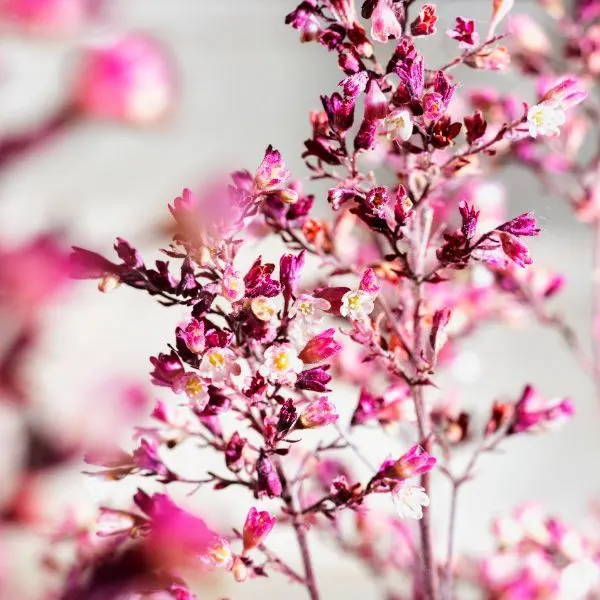
Pairing Heuchera and gardenia in your garden creates a wonderful dramatic look you will not get enough off. The best thing about these perennials is that they come in a variety of styles. For example, the velvety gray-to-silver leaves of the Twilight variety add a fuzzy touch to the garden while accentuating the white gardenia blossoms.
The best part of combining these two contrasting plants is their sizes even allow for pot or container planting. Since they have similar growing needs you can pair them together in any style.
8. Toad Lilies
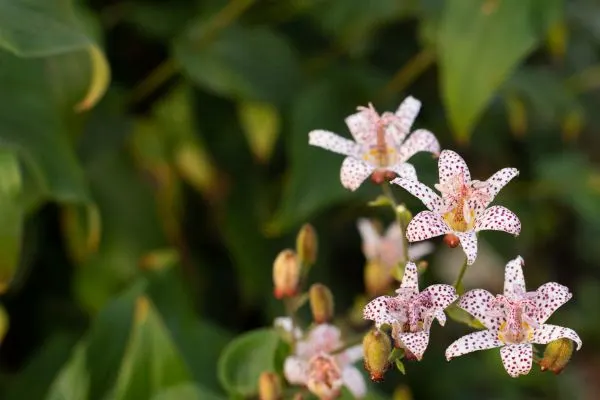
Toad lilies are Japanese herbaceous perennials, part of the lily family. The perennials feature an exotic look with large leaves and small unique blossoms that add to their incredible appearance. Toad lilies pair pretty well as their orchid-like blooms offer a striking contrast to the gardenia blossoms. Toad lilies are also deer resistant.
9. Solomon’s Seal

Pairing Solomon’s seal and gardenias add an extra layer of texture and interest in the garden. The plant features glossy dark green foliage and grows small, drooping lemon-scented flowers. The small-sized flowers and dark green leaf foliage create the perfect size, texture, and color contrast to elevate the garden look.
10. Brunnera
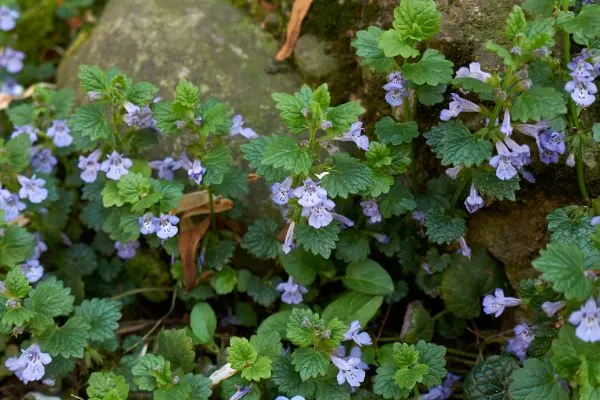
The low-maintenance brunnera develops unique green leaf foliage with white variegations and beautifully complements the white gardenia blossoms for a perfect garden pairing. These rhizomatous perennials also grow sprays of blue flowers during spring, giving your garden a colorful and lively pop of color.
Brunnera also grows as ground cover, adding more life and pizzazz to your garden while providing the perfect coolness during sunny afternoons.
11. Ferns
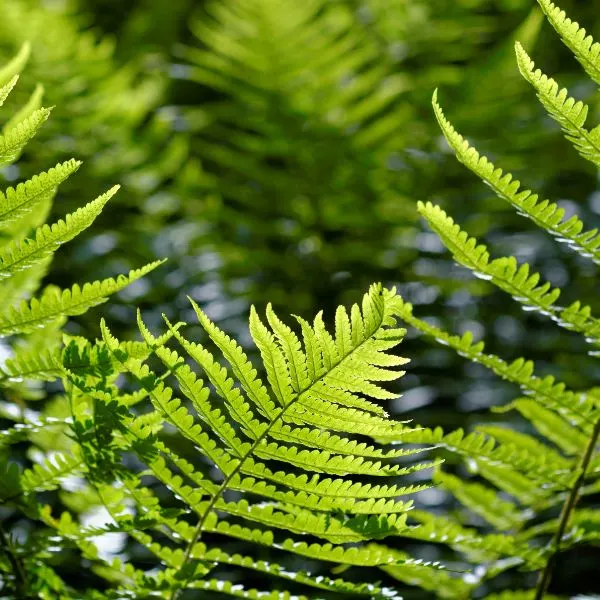
Ferns are usually associated with growth in the woodlands or forests. But, they add a stunning layer of texture and elegance when paired with a range of flowering plants, including gardenias. In fact, their dense striking foliage adds a brilliant interest in the backdrop of gardenias. Ferns also come in a variety of styles and types so you can pick the garden setup you want.
Nonetheless, ferns don’t bloom, meaning you don’t have to worry about other blossoms distracting you from the gardenias as the focal point. Instead, the striking foliage of the ferns simply helps to accentuate the blossoms while adding much-needed textural beauty.
12. Strawberry Begonia
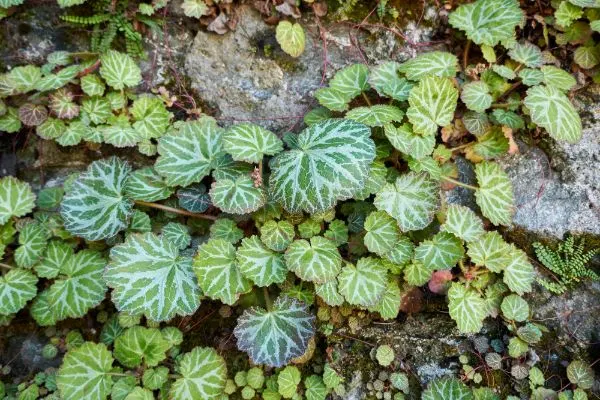
Strawberry begonias are excellent planted outdoors or kept indoors as houseplants. These compact plants come in many varieties. But, my personal favorite is the variegated variety with beautiful light green and soft pink shades. The compact plants look beautiful hanging or in a pot against the delicate gardenias.
13. Hosta
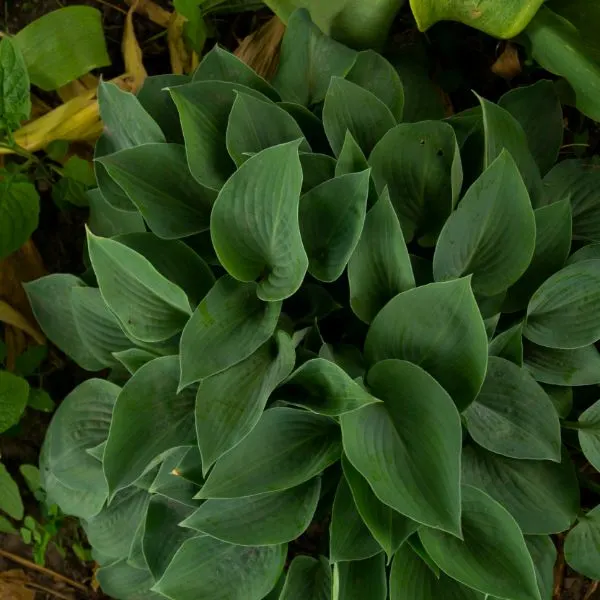
Hostas are loved for their lush foliage and low maintenance. They are also available in a selection of over 2,000 cultivars, allowing you to take whichever gardening direction. Their variety of shapes, sizes, and textures also allow you to create a wonderful pairing with gardenias.
It also pays to know the right hostas shade to go for. After all, you can come across everything from light to dark and variegated hostas. Lighter hostas do well under sunny settings while darker and deeper shade varieties retain their shades in partially shaded areas.
On the other hand, variegated hostas require more sunlight to maintain their white and gold stripes in their best nature. So, paired with gardenias, the deeper and darker shades are the best options.
Woody and Herbaceous Perennials
14. Roses
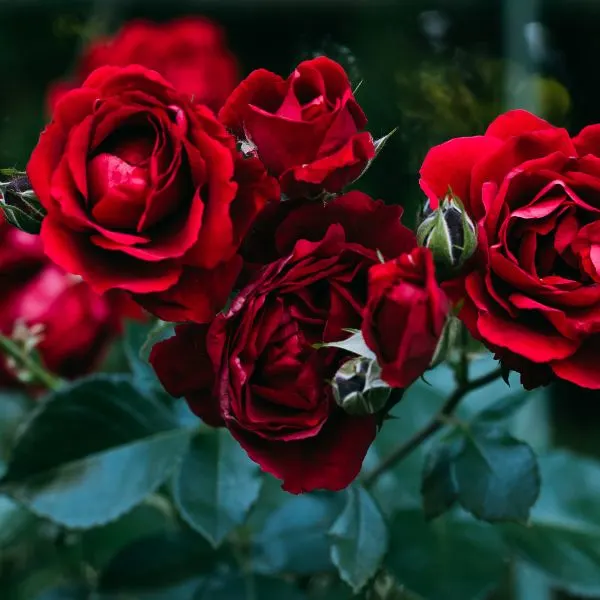
Roses are perhaps the most popular woody perennials among gardeners. They grow beautiful showy blossoms and boast an intoxicatingly sweet scent. Yet, they can be paired impeccably well with gardenias. Roses also attract a good number of pollinators to promote an abundant and healthier floral garden.
15. Lilies
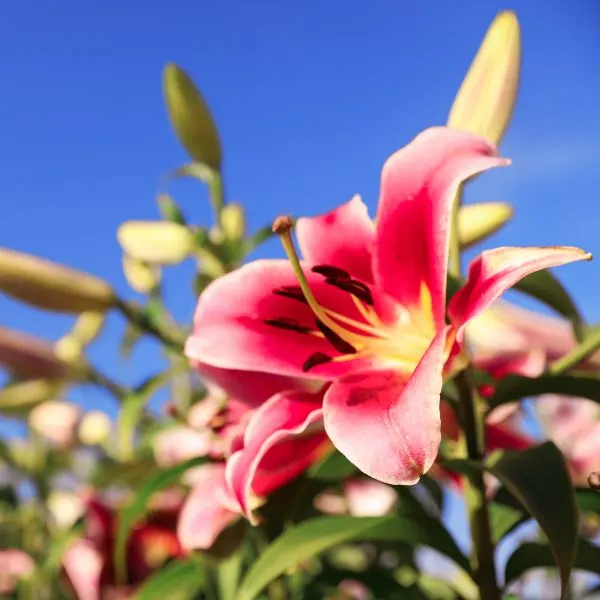
Lilies come in a huge collection of varieties, each adding interest to your garden. Whether Easter, Madonna, tiger, or stargazer, any lily variety pairs perfectly with gardenias. Lilies grow large colorful flowers, in shades of yellow, white orange, red, pink, and purple, to name a few.
Some varieties also add more texture with added details, like freckles on their petals. Additionally, lilies boast tasteful nectar which keeps them with constant visits from a variety of pollinators.
Tip: My personal favorite variety is the peace lily. Like its name, the peace lily is known for its special calming and air-purifying effects. Peace lily also has a “cleaning effect” on account of its ability to break down and neutralize toxic gasses, such as formaldehyde and carbon monoxide.
16. Blanket Flowers
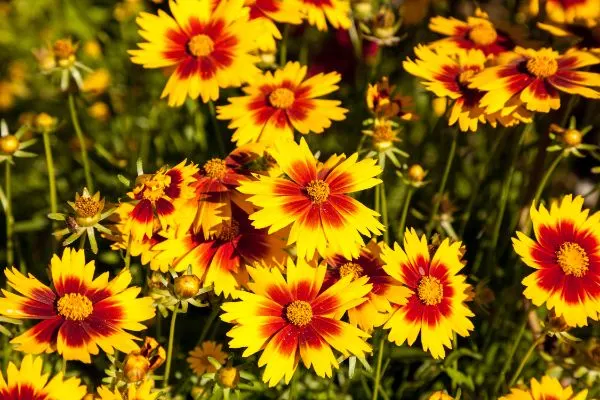
Also known as gaillardia, blanket flowers are what you add to our garden for a visually appealing and dramatic look. The perennials grow daisy-like flowers with rich color shades that combine pink on the middle and yellow on the outer edges.
These perennials get the name blanket flower from the appearance of their blossoms. These blossoms resemble the brightly patterned Native American blankets that come in similar colors.
17. Orchids
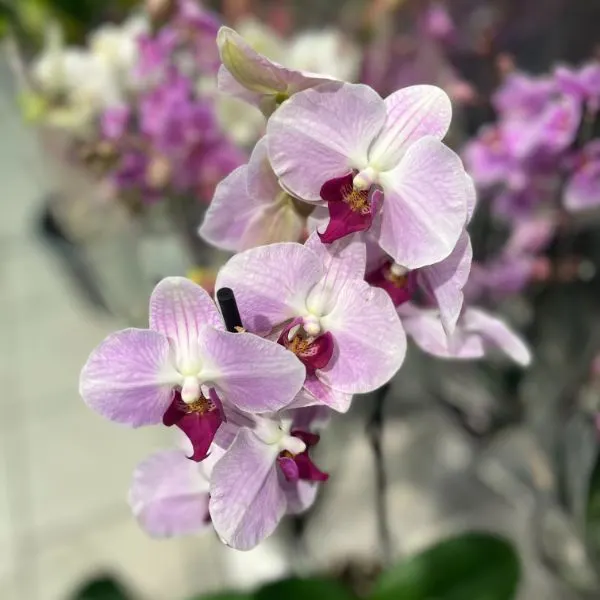
Orchids come in a variety of types and grow well in gardens or as house plants. While some orchids thrive in warm and humid climates, other varieties do well in colder climates. These perennials grow colorful and fragrant blooms.
Yet, they pair well and complement gardenias. In addition to providing shade to other plants, orchids also promote the health of fellow companions. Orchids reduce moisture loss in the soil, which is essential for gardenias.
Additionally, their blossoms provide nectar and pollen that attracts a good amount of pollinators. This, in turn, allows for more flower production and an even better-looking floral garden.
18. Dahlia

Dahlias come in different sizes and color varieties, ranging from yellow and orange to pink, purple, red, and white. These perennials make excellent companions for gardenias with their distinctive-looking blossoms adding extra interest to the garden.
Now, dahlias are pretty special perennials because they develop tubers, yet, their roots don’t interfere with gardenias when planted well. Their height also allows for a strikingly brilliant textural and color contrast when paired with gardenias.
Blooming Annuals
19. Wax Begonia
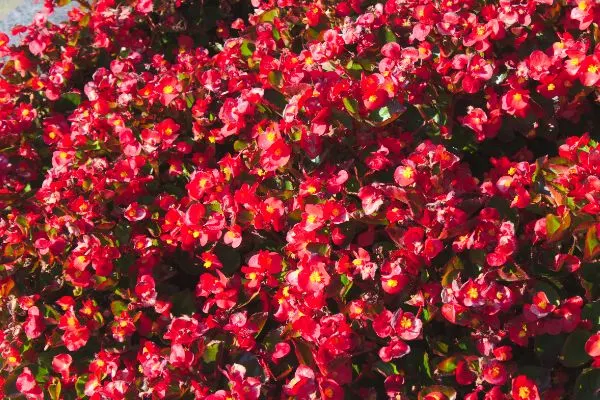
Wax begonia grows beautiful small and colorful blossoms surrounded by glossy green leaves that stand out and make for an outstanding focal point. When paired with the light and slightly larger white gardenia blossoms, the pair creates an amazing striking texture and color combination.
20. Impatiens

Impatiens adds a bright and fun element to the shaded part of your garden. These bright-colored blossoms also pair well with gardenias as they share similar growing needs. You can pair them in pots, as border plants, or as bedding plants.
21. Blue Torenia
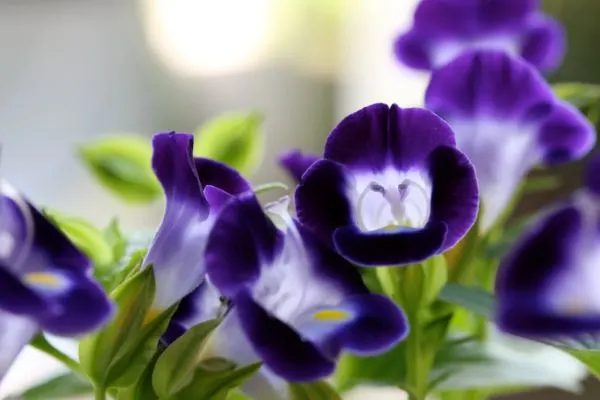
Blue torenias are popular blooming annuals to pair with gardenia. They boast just the right bright colors to add that pop of color for a bright and colorful summer garden.
22. Primrose

Primrose paired with gardenia slightly extends the blooming season, allowing you more time to enjoy the floral view. These annual blossoms earlier during spring allow you to curate a colorful garden based on your preferences. After all, the annuals come in a wide range of sizes, colors, and styles. Primrose can also be planted in a variety of ways, whether in garden beds, borders, or pots.
23. Cornflower

Also known as the bachelor’s button, cornflower is another popular companion annual for gardenia. Cornflowers boast stunning blossoms in varying shades although blue-flowered cornflowers are more popular. Popularly planted in beddings, borders, and landscapes, the blue cornflower blends well with gardenias to produce an outstanding view.
24. African Daisies

African daisies feature their unique blooming appearance that adds elegance and beauty to any garden setting. These hardy annuals pair well with gardenias without their pleasant scent being overpowering. For the perfect visual appeal, pair gardenias with the more colorful daisies instead of the white ones.
25. Petunias

Petunias grow delicate purple blossoms abundantly and can be added to your garden in a variety of styles. Whether planted in hanging pots, garden beds, or even, in landscaping, you can always maintain the best visual look from these annuals. Their attractive purple color also blends well with the lighter gardenias.
26. Sunflowers
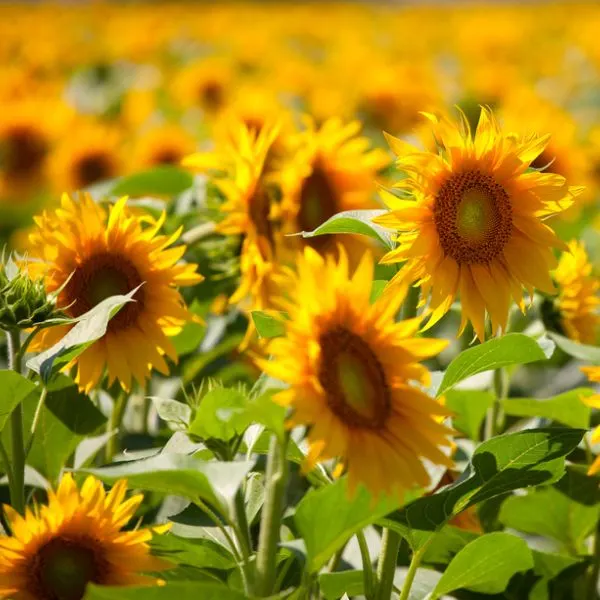
The larger and striking yellow sunflowers grow pretty well with gardenias to create a magical floral field. When we hear sunflowers, our first thought goes to the larger varieties grown in the field as food crops. However, these flowering plants come in many varieties, allowing you to pick the shape and size you want for your garden.
27. Superbells

The summer superbells grow in a beautiful and elegant bunch and are popular for creating showy flower arrangements. When paired with gardenias, they produce a slight view that elevates the look of any garden.
Garden Perennials
28. Geraniums

Also known as cranesbills, geraniums are known for their vibrant colors and fragrant blossoms. Whether grown in garden beds or pots, geraniums pair perfectly with gardenias. You can choose your preferred blossom shades, whether pink or purple, to name a few.
Adding geraniums to your garden also adds an extra layer of protection. They boast a heap of antioxidants to protect against environmental stressors. Incorporating geraniums in your gardenias garden also extends the blooming season as they blossom through the winter season.
29. Snapdragons
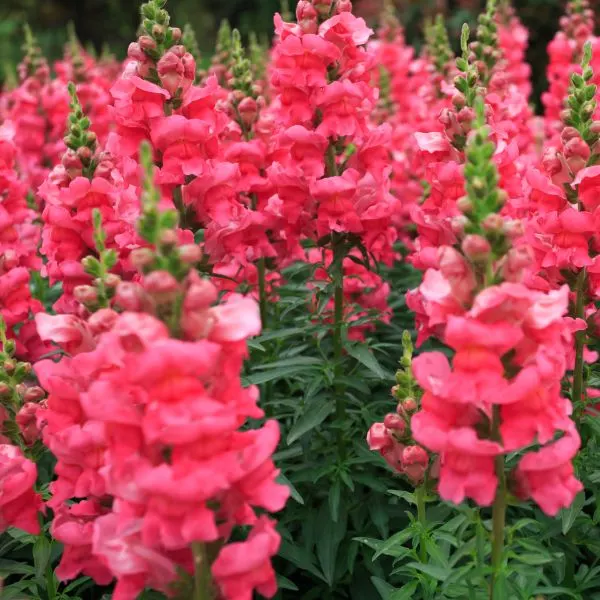
Snapdragons grow vibrant colorful flowers and do well as bedding plants. They come in a choice of yellow, orange, white, pink, and purple shades and blend well with gardenias. These perennials feature a pretty distinctive look, growing large pointy flowers that sit on top of the equally-pointy vertical green leaf foliage.
These perennials are also significantly smaller than gardenias and do a great job of highlighting the latter. In fact, you can create a beautiful bubble with gardenias at the center surrounded by the more colorful smaller snapdragons.
House Plants
30. Cast Iron Plant
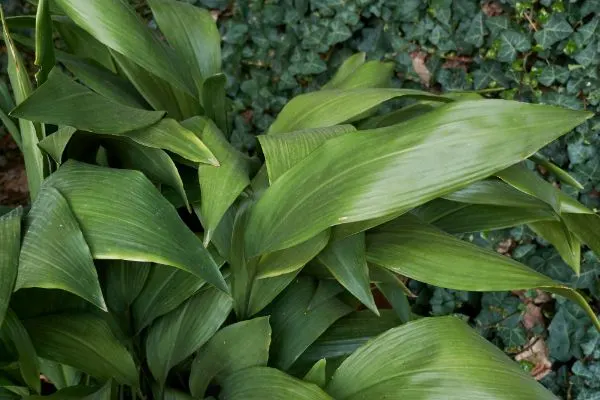
Also known as the bar room plant, the cast iron plant is an herbaceous perennial native to Japan and Taiwan. The cast iron plant is also a popular houseplant and thrives due to its love for shaded areas. The cast iron plant boasts similar growing conditions to gardenias and the two plants complement one another well. The artistic green foliage of cast iron plants pairs incredibly well with the white blossoms of the gardenia plant.
31. Succulents
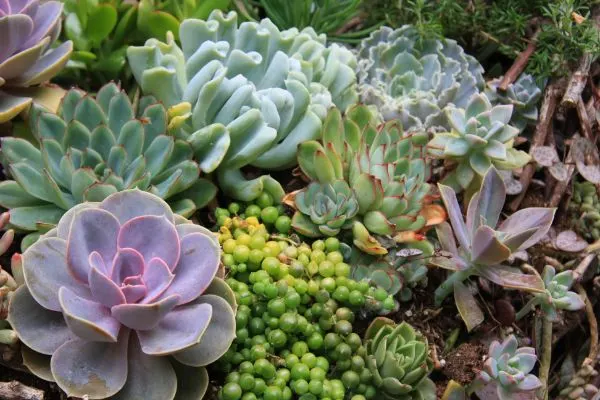
Unlike many plants, succulents such as aloe vera grow well with gardenias. Gardenias survive best in warmer climates although they prefer shade. However, some varieties will survive colder climates in hardiness zones 8 or lower when grown indoors.
You can then transfer the pots outdoors during warmer summer seasons. Succulents are among houseplants that do well with gardenias both indoors and outdoors. Pairing succulents with gardenias promotes better growth for the latter.
Succulents naturally store water in their leaves which comes in handy during dry periods. Further, they insulate roots, even their companions, making them perfect pairs if you plant gardenias during the cold season indoors.
Each succulent also comes with individual benefits. For instance, aloe vera protects gardenias from pest infestations and fungal diseases while also providing gardenias with supplemental nutrients and water.
32. Spider Plants
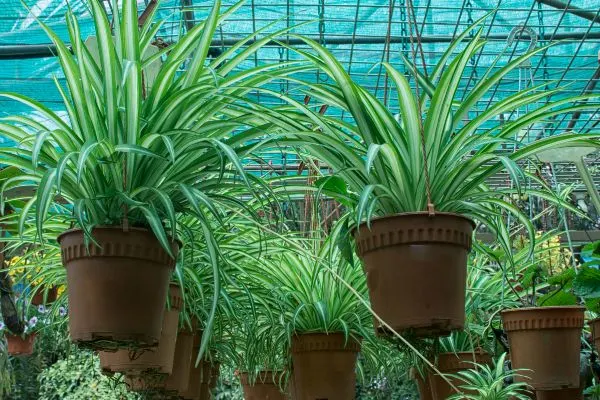
Spider plants grow elegant green and thick green foliage that resembles spider legs. The green foliage does great against the blooming gardenias. They help to highlight the blossoms while their texture and color add more interest. Spider plants also repel a good number of pests.
Herbs
33. Salvia
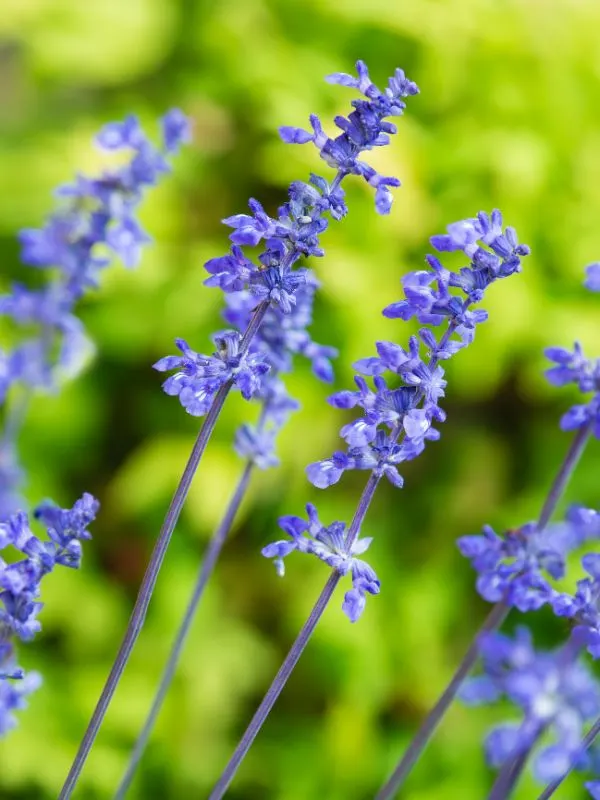
A good number of herbs pair well with gardenias, salvia being one of them. The best part of adding herbs to your garden is not only their gardenia-supporting properties. You also get a reliable supply of fresh herbs without spending a buck. Also known as garden sage, salvia grows showy purple vertically shaped flowers that complement the larger white gardenia blossoms.
Additionally, paired together, salvia and gardenias attract beneficial pollinators; such as butterflies, bees, and hummingbirds from spring through early fall. Additionally, salvia also protects gardenias against several pests, particularly spider mites, to whom gardenias are susceptible. Salvia is also deer and rabbit resistant.
34. Marigolds
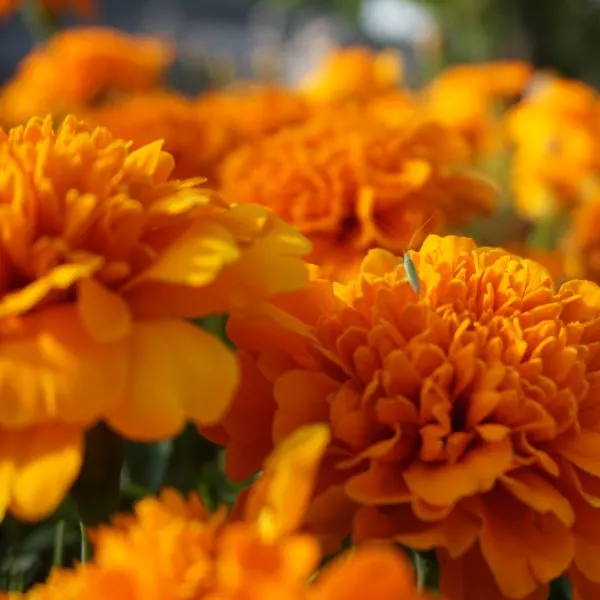
Marigolds grow beautiful and deep yellow to orange blossoms that add beauty to your gardenia garden. The bold yellow-to-orange blossoms pair well with the white gardenias. Marigolds are also fragrant and help to repel some of the gardenia’s worst nightmares, including the most invasive nematodes under the soil and deer on the ground.
However, their strong aroma doesn’t interfere with that of gardenias. They have a rather straw-like and musky aroma. While they also attract good pollinators like butterflies and bees, marigolds also prevent weeds from growing around.
Beyond the garden, the center parts of marigold blossoms are completely edible. You can pair these edible petals with nasturtiums, borage, pansies, and violets for a perfect edible garnish blend.
35. Wild Marigolds

Alternative to regular marigolds, you can opt for wild ones. Also known as golden or lemon marigolds, wild marigolds also pair perfectly with gardenias. Unlike regular marigolds, they grow smaller yellow-colored flowers that equally complement the larger gardenia blossoms.
Like gardenias, wild marigolds bloom from summer through fall to guarantee a delicately elegant look during the warmer seasons. These herbs also attract good pollinators, while keeping gardenia-attacking pests, like aphids, away.
36. Catnip
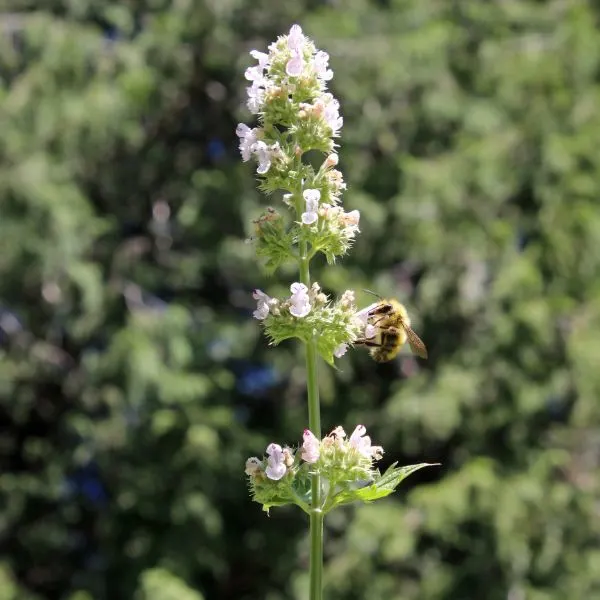
A member of the mint family, catnip promotes abundant gardenia growth by enhancing their flowering. These herbs also boast a string scent that comes in handy to repel a wide range of pests that attack gardenias. These include aphids, spider mites, mealy bugs, leafhoppers, and whiteflies.
37. Lavender
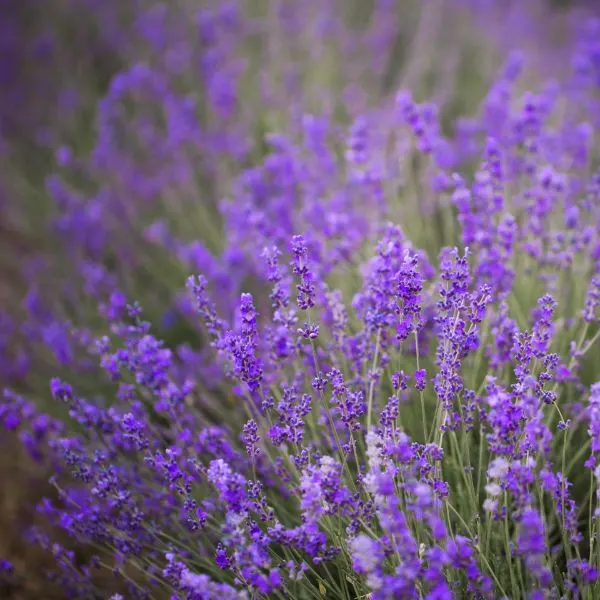
Lavender boasts an aromatic scent that actually does pretty well with gardenia. These aromatic herbs also grow small lavender blossoms that grow well around gardenias as ground cover. Lavender also boasts aromatic essential oils that fend off bacteria, fungi, and insects.
38. Lemon Balm

Lemon balm grows as a perennial shrub and features a subtle scent that is useful for repelling insects. Lemon balm also bears several benefits for gardenias. In addition to protecting them from pests, lemon balm also keeps them clean while boosting stem health and yield.
39. Rosemary
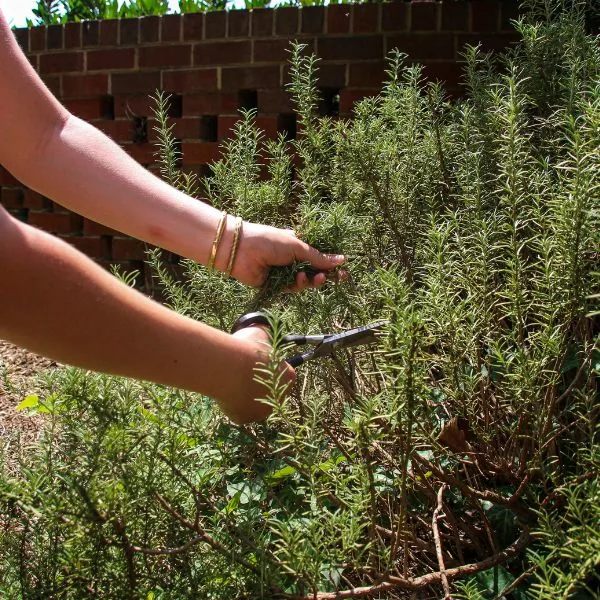
The strong scent of rosemary helps to repel many insect types while promoting the growth of gardenias.
40. Basil
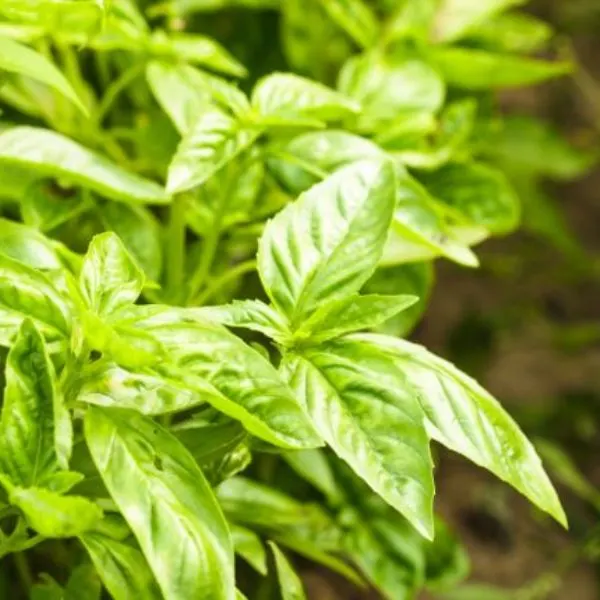
Like rosemary, pairing mint with gardenia repels several pests while promoting their growth.
41. Mint

Mint is another strong-scented herb that grows well with gardenia without interruptions. It helps to repel several gardenia-attacking pests while also improving air quality within the garden.
42. Sweet Marjoram
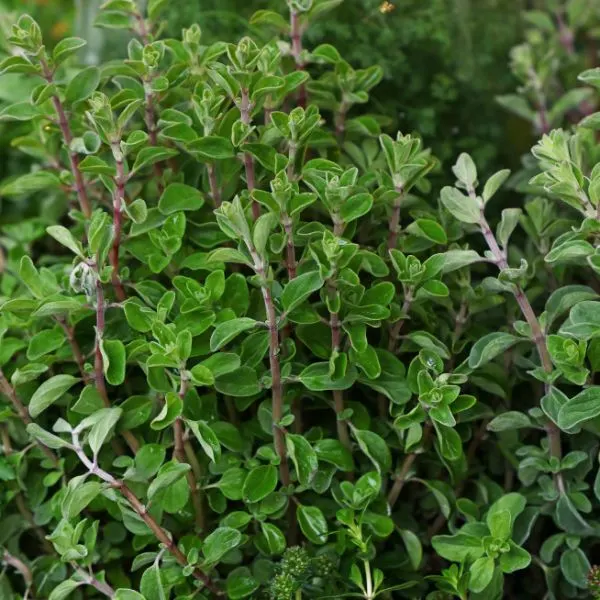
Sweet marjoram complements gardenias with its string scent which helps to repel pests. In fact, sweet marjoram repels a good number of pests prone to attacking gardenias, such as aphids and mites.
Larger Deciduous and Evergreen Trees
43. Crepe Myrtle
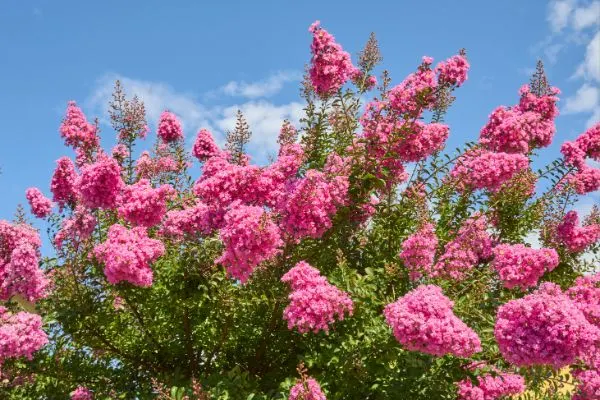
You can find a good number of evergreen and deciduous trees that grow well with gardenias. The acid-loving crepe myrtle pairs perfectly with these shorter flowering shrubs. These trees are popular for their wrinkled paper-like flowers and their warm weather-loving nature.
Pairing them with gardenias provides them with the much-needed afternoon shade while adding extra interest, thanks to the bright paper-like crepe myrtle colors.
To complete this color and texture contrast garden setting, add hostas to the mix, particularly variegated varieties. This beautiful color and texture layering will have your guests drooling over your garden.
44. Creeping Charlie
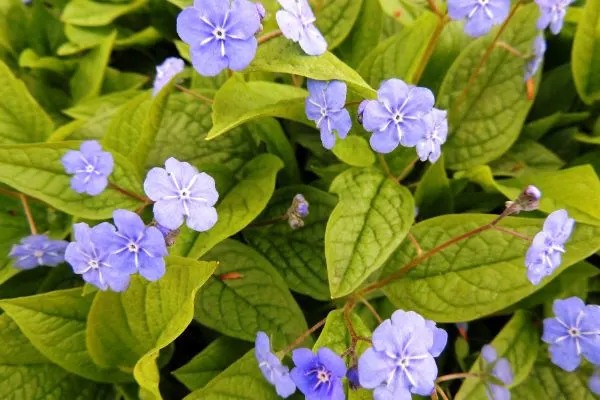
As the name suggests, creeping Charlie grows near the ground. However, this growing nature is what makes it a perfect companion for gardenias. As it creeps on the ground, this plant helps to keep the soil moist while boosting air circulation. These properties allow gardenias to thrive and grow even better.
45. Purple Pixie
For a more dramatic and colorful look, pair purple pixie with gardenias. The best part of using these evergreen ground-covering creepers is that you can add them anywhere around the exterior of your home, whether the garden, lawn or even, the entryway.
You can also plant the dwarf-sized plants in pots for a magnificent weeping look. These plants feature rich eggplant purple leaves that last all year round and do a fantastic job at highlighting gardenia blossoms.
46. Dogwood
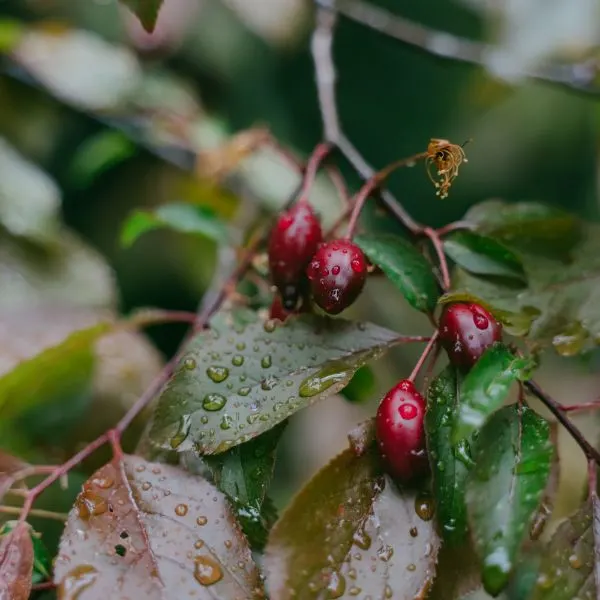
Dogwood is known for its vibrant and characteristic foliage that gives your garden a striking look every season. During the summer season, the tree grows bright green summer leaves that accentuate the white gardenia blossoms. As the season transitions to fall, so does the dogwood foliage, turning into a beautiful scarlet. On the other hand, the cold winter days expose the boisterous dark patterned bark.
47. Ficus Tree
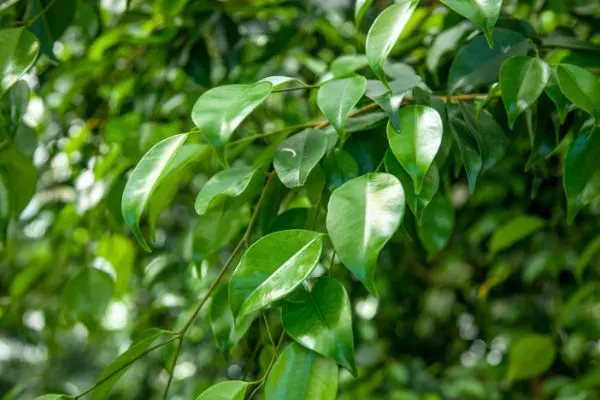
Ficus trees help to provide the much-needed shade for gardenias while their thick bark offers a layer of protection from insects and diseases.
48. Japanese Maple
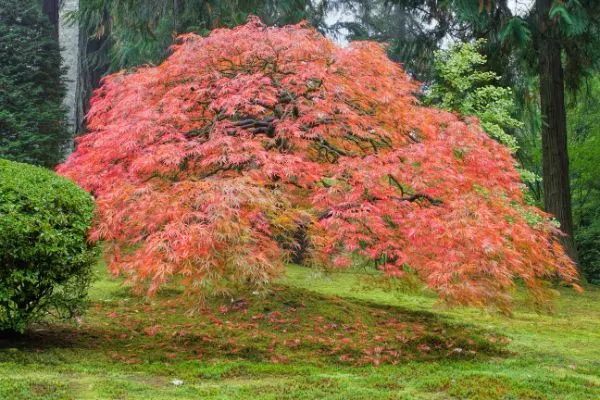
Japanese maple is also known for its ornamental value and can elevate any gardenia garden. These trees come in different varieties, giving you a wide selection of colors, leaf shapes, and even sizes. Their unique growth makes them perfect landscaping trees.
While they complement gardenias with their ornamental look, they also provide them with shade while maintaining an interesting look in your garden all year round. Japanese maple grows strikingly green summer leaves which transition into a brilliant fall color on its elegant structure.
The tree doesn’t disappoint during the spring season either, thanks to its elegant reddish-purple blossoms. You can grow regular-sized upright Japanese maple as understory trees in woodland gardens or lawn trees.
Alternatively, opt for smaller varieties if you want to create shrub borders or add them to large containers. Either direction you take, Japanese maples pair well with gardenias. If you want more floral and color varieties, add begonias and azaleas to the mix.
49. Bay Laurel

Bay laurel is naturally grown in warm climates, although it survives mild winters. Pairing it with gardenias helps to protect the latter from direct sunlight, winds, and heavy rain. Bay laurel is also beneficial to the garden as it attracts beneficial pollinators.
50. Citrus Trees

On a hot summer day, citrus trees do a fantastic job of sheltering gardenias. Their smaller white blossoms and yellow to orange fruits along with their subtle fragrance add interest to your garden.
Plants to Avoid Pairing with Gardenias
Gardenias grow well with a large number of different plants. But, this doesn’t mean that the delicate flowering shrubs can survive with just about any plant. While it’s sometimes not easy to figure out which plants to avoid, you can always familiarize yourself with the selection principles.
Remember, gardenias require certain environmental conditions to grow and thrive. With just a small difference in these conditions, your flowering shrubs can easily fall apart. This is an excellent place to start when trying to figure out whether or not gardenias pair well with a certain plant.
Here’s how you can identify the worst companion plants for gardenias;
1. Plants that Don’t Share Growing Conditions
Gardenias are acid-loving plants and thrive in well-drained and moist soils. These plants also survive in USDA hardiness zones 9 to 11, they don’t do so well in zones 8 or lower.
Further, while they love the morning sun, these plants prefer partial to full-shaded areas in the afternoon. So, plants that only grow in different conditions than these aren’t ideal for gardenias.
2. Resource Competitors
Gardenias need to be spaced out when paired with their companions. But, this may not be enough if you have plants with invasive or long/wide roots. Simply put, gardenias do not tolerate root competition.
3. Heavily Scented Plants
Gardenias are naturally scented. You want to avoid pairing them with heavily scented plants, like alliums, that can easily compete with or mask their elegant scent.
4. Gardenias and Gardenias
Yes, you read that right! Pairing gardenias with more gardenias may be bad for your garden. This is because planting too many gardenias in the same areas can actually exacerbate pest infestation. For instance, if one shrub gets infected, it is easy for the infection to spread to the rest.
This would be otherwise impossible if you paired the shrubs with other plant types, particularly those that repel the pests.
Frequently Asked Questions (FAQs)
Can I Plant Gardenias with Roses?

You can certainly plant gardenias with roses. While both plants grow strikingly beautiful and strong scented blossoms they complement one another pretty well. Roses even help gardenias in attracting pollinators which, in turn, allows for more flower production.
Do Gardenias Grow Anywhere?
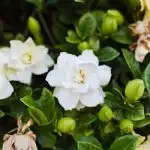
Gardenias prefer warmer climates and thrive best in USDA hardiness zones 9 to 11. Zones 8 and lower are considered too cold for gardenias, although you can find newer hybrid varieties that can survive Zone 8. If you live in a cold climate and want to plant gardenias, you can keep them indoors and move them out during summer.
Can I Grow Fragrant Flowers with Gardenias?
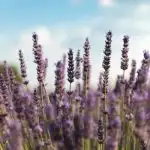
As a general rule of thumb, avoid pairing gardenias with any heavily scented flowers. This, however, doesn’t mean that these plants don’t pair well with any scented flowers. They still grow well with roses and lavenders, among other scented flowers.
Conclusion
With such an extensive list, you can always find the best companion plants for gardenias to add to your home. Whether its fellow flowering shrubs, scented annuals, or even edible herbs, adding gardenias to your growing list can be the start to curating the garden look and ambiance you dream of.
But, to truly enjoy a healthy garden, you have to know plants to avoid pairing with these delicate and sometimes fussy flowering plants.
More plant stuff
